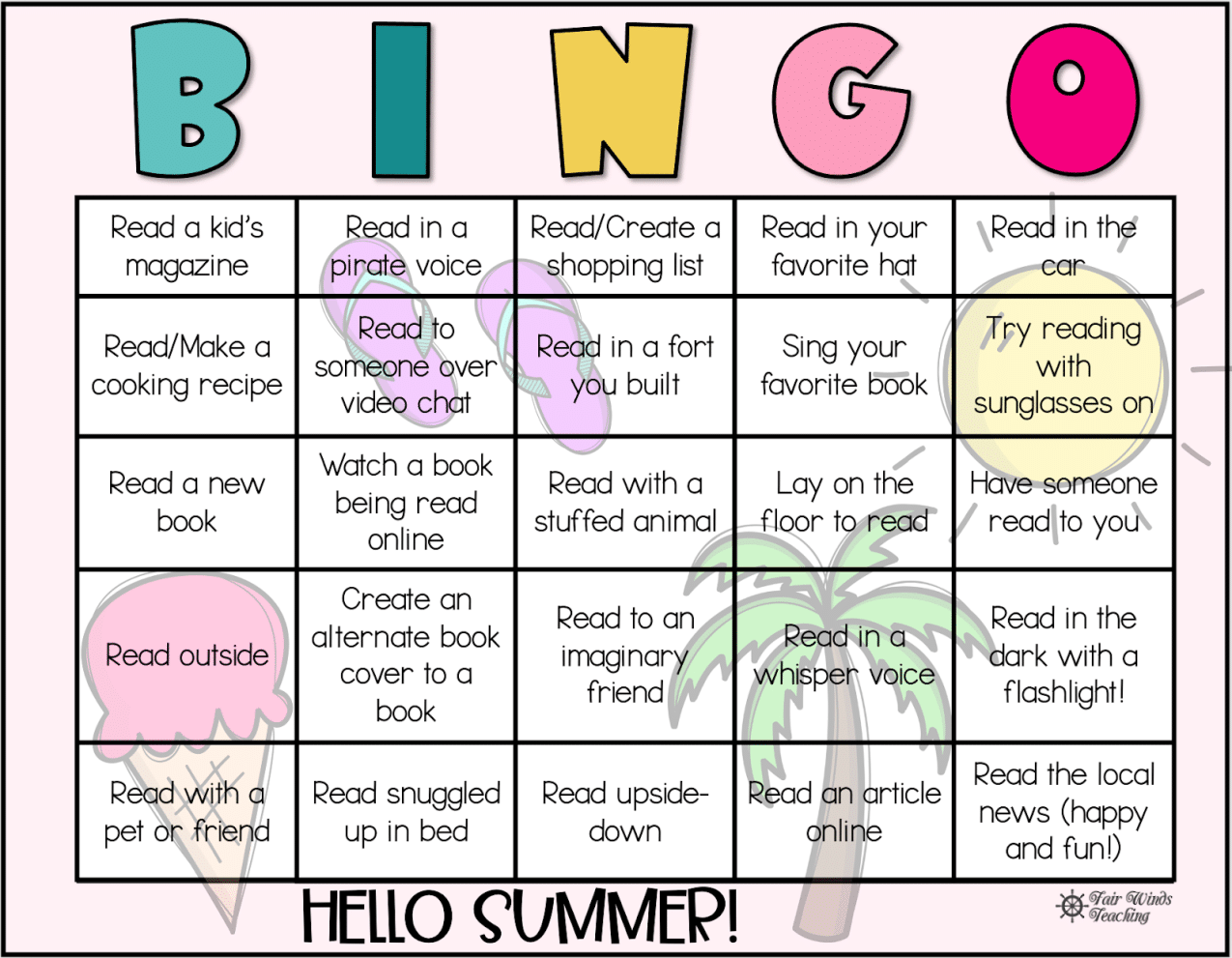

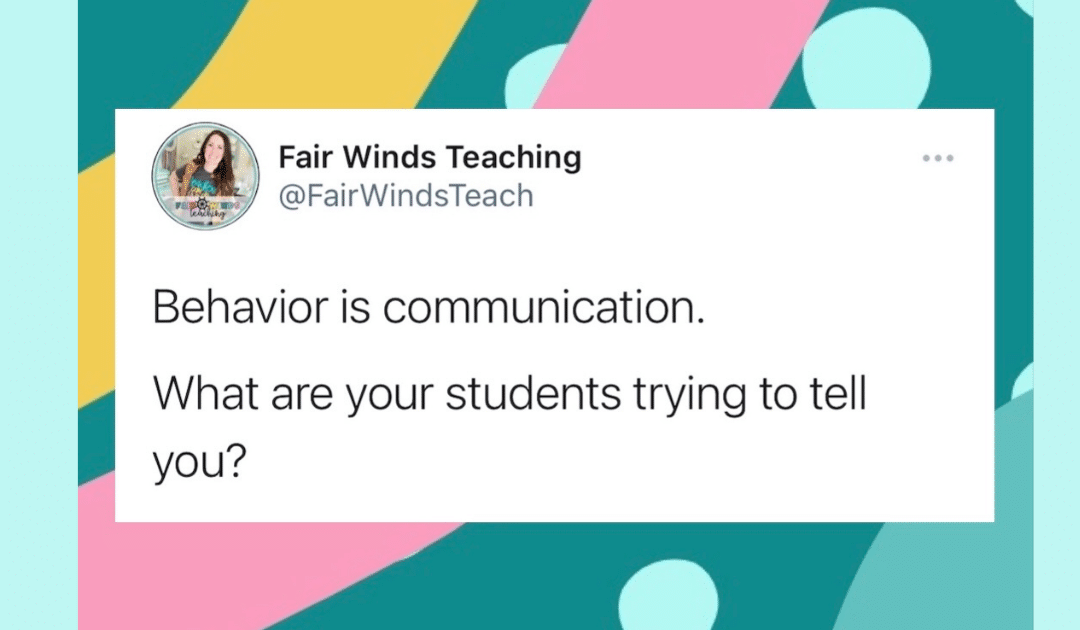
Social and Emotional Learning (SEL)
Written by Casey Keyser, MSEA Third Grade Teacher
The teacher world loves to have new “buzz words” as the educational pendulum swings from side to side. I know that a lot of people have heard the term social and emotional learning and/or SEL in the last couple of years. But this is not a new concept, it’s just now becoming more of a widely known term.
Thankfully, this has made educators, administrators, families, and the community more aware of the need our students have to be more mentally fit when it comes to learning about emotions and how to deal with social situations.
When you starting as a new teacher or if you are new to teaching SEL, remember that building relationships in the classroom are key! You must first teach a child they are loved before they can be ready to learn everything else. If a child knows they belong, they will be more receptive to learning academics, social skills, emotional regulation and everything you teach them.
What is something you do to build relationships with your students? The beginning of school is right around the corner, some closer than others, so this is a great time to start building classroom community and those connections with your students and families!
Before your students even step foot into your classroom, you have an opportunity to set up a warm and welcoming space for your students to learn in. The classroom environment is a great way to let your students know they belong in your classroom and it’s important they have the tools needed to help identify their emotions and how to regulate them when situations arise. I love these emotions posters from @creativeschooldaze are a great resource to hang up around your room and to use in a calming/peace corner.
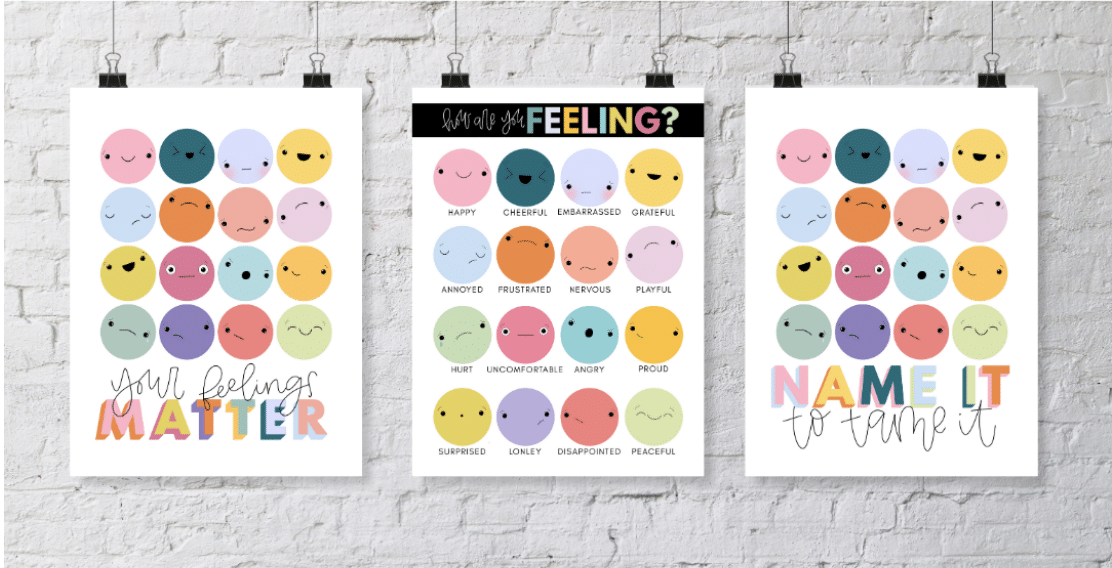
When a student does show their emotions in school, it’s very important to be able to recognize and celebrate them (even the difficult emotions). We all have them and it’s important to teach them that every emotion is okay to have, but it is the way you react to those emotions that really matter.
It is vital for all teachers to know that a child’s behavior is a form of communication. They might not have the vocabulary yet to express how they are feeling and a child may sometimes use unwanted behaviors to show you because they don’t know any other way. Behavior is communication. What are your students trying to tell you that you might be missing?
Make sure you are never asking a child at that moment, “What’s wrong?” Instead tell them, “I can see that you are upset and I want you to know that I am here for you when you are ready to talk.” This is the perfect time to ask them if they would like to visit the calming corner in your classroom.
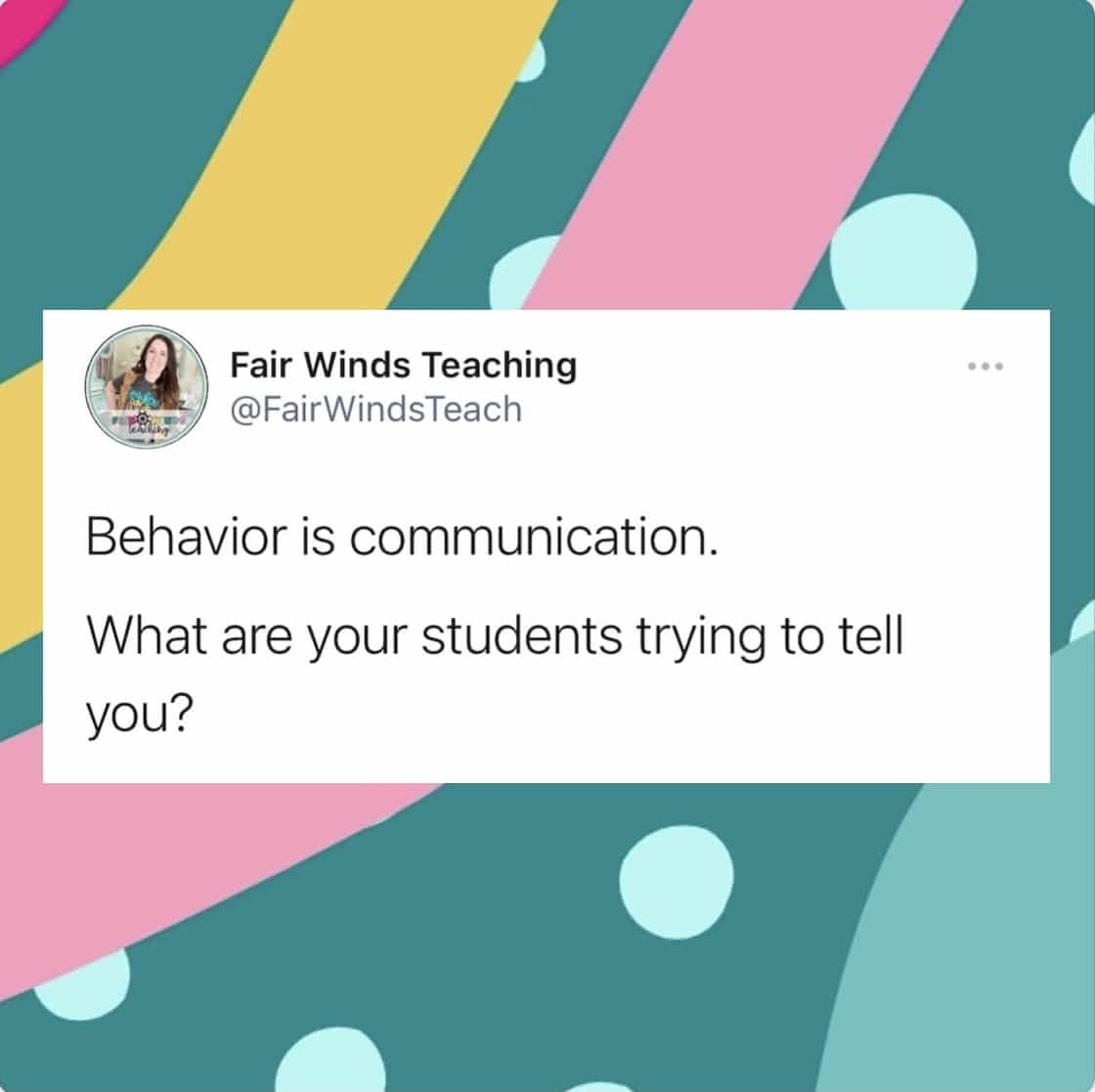
Ways to promote a safe and welcoming classroom
Check-in with each and EVERY one of your students every day. Use their name. Greeting them when they walk through the door is a positive way to start off their school day. I like to have a “Morning Greeting” poster with each of my students to use during the morning meeting. They simply choose the greeting they would like as we walk around in a class circle and say, “Good Morning, __(name)___!” Here are some of the options I give:
-
- High five
- Secret Handshake
- Chicken Wing
- Dance move
- Fist bump
- Smile
- Wave
- Hug
Next up, I like to start my day with a restorative circle or morning meeting. The games or activities that I enjoy doing best to start the day off right are things that will wake up my student’s brains and get them talking with each other to build those relationships.
-
- Dictated drawings – My favorite is Art Hub for Kids
- Charades
- Would you Rather?
- Show & Tell
- Adjective hunt
- What’s Missing?/What’s Different
- 20 questions
- Pictionary
- Red elbow
- Pico fermi nada
- Pecha Kucha
A must-have in every classroom is a place a student can go if they need a minute to be with their thoughts or time to process an emotion. This is NOT a timeout area. This is not somewhere you send kids if they aren’t displaying appropriate school behavior, this space should be a respected space in the classroom that is available when a child needs it.
Setting up a Calming Corner is easy and fun to create. Pick a spot around your classroom that has a little nook or space that is safe. I use it under my countertop, it is private up still open for me to be able to see the student. I found a couple of pillows and a soft blanket to lay on the ground. I bought a lap desk to hold all of the materials a student can use for their time there. Lastly, I place our breathing strategies and emotions posters on the wall next to the corner. This way they can refer to them while visiting the area. I will list the items I put in my calming center and you can find a longer list of links here as well.
-
- Lap desk
- Pillows
- Calming ocean scene posters
- Blanket
- Fidgets
- Calming timer light
- 5-minute sand timer
- Digital timer
- Playdoh
- Bubbles
- Coloring books & crayons
- Sensory bin items (sandpaper, fabric, cotton balls, etc.)
- Legos
- Squishy plush toys
- Seguin sliders
- Calming music on an old iPod & headphones
- Lava lamp bottles for shaking up and watching
I also make student bags to send home with each child so they can set up a corner in their own bedroom or home. I call it the “On the Go: Peaceful Practices” It is a little bag full of the same type of items. This year I am sending home a coloring book, crayons, playdoh minis, bubbles and a bubble breathing poster to hang on their wall. The students really love setting up their own spot in their houses and come back to school the next day and tell me all about it. I want them to use the same practices we use here in their real-life settings as well. If you would like this FREEBIE printable of the Peaceful Practice gift bag sign and one bubble breathing poster, check it out here. Be on the lookout for the Peaceful Practice Bundle coming soon!
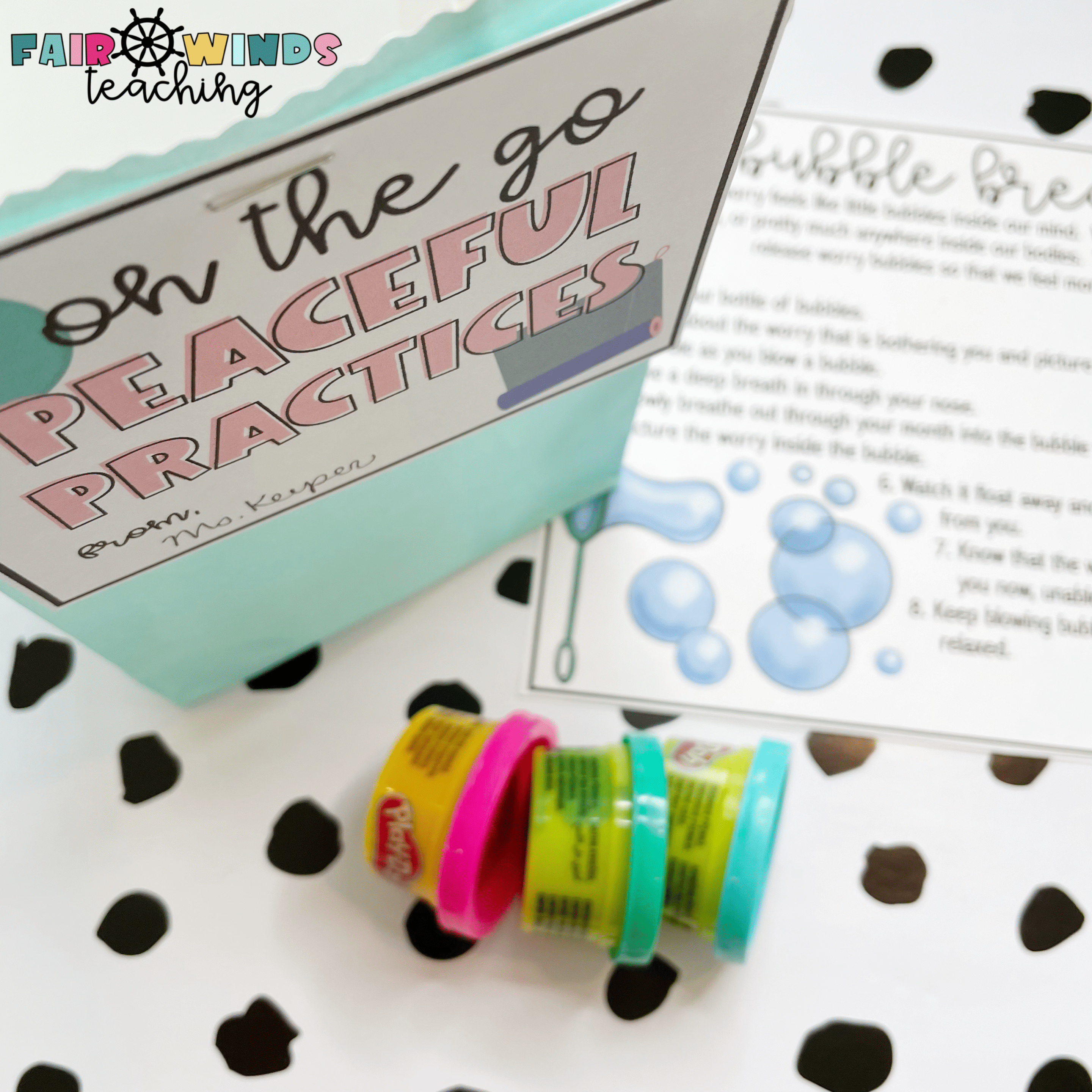
Another great FREE resource to use is printing your own Zen doodling sheets for students to do when they need a moment to themselves or after they finish their classroom or an assessment.
Always remember… the best thing you can do for your student is to show up for them each and every day.
Lastly, I always want to share with you the love I have for books. I read my class a read-aloud each day of the school year and a lot of time I introduce SEL books. Here are eight of my favorites and you can find them on these linked lists!
Great Eight SEL Books to check out!
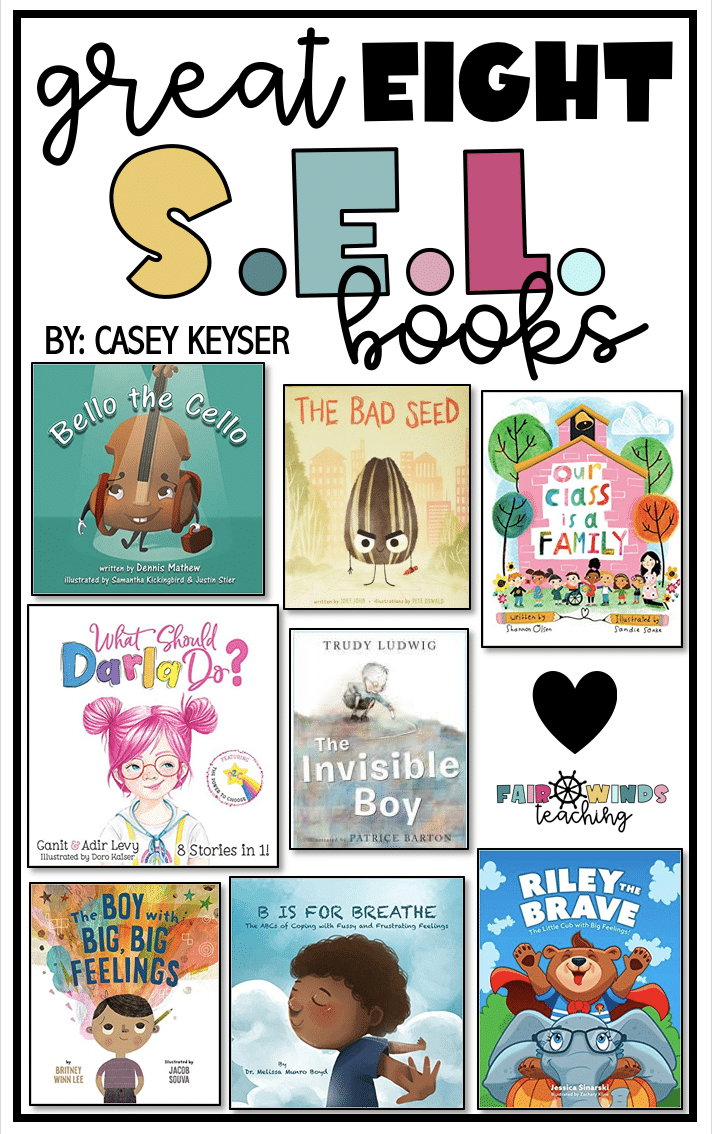
Bello the Cello By: Dennis Matthew
The Bad Seed By: Jory John
Our Class is a Family By: Shannon Olsen
What Should Darla Do? By: Adir Levy and Ganit Levy – These amazing authors also shared this amazing FREE resource with me to share with you all! Check it out here!
The Invisible Boy By: Trudy Ludwig
The Boy with the Big Big Feelings By: Britney Winn Lee
B is for Breathe By: Melissa Munro Boyd
Riley the Brave By: Jessica Sinarski

Casey Keyser is a third-grade teacher at Butterfly Ridge Elementary in Frederick County, Maryland. She was recently recognized as the national winner of the NEA Foundation’s 2021 Teaching in Excellence Award. Casey is the proud owner of the Education Resource Blog, Fair Winds Teaching, and loves to connect with her education community through her TeacherPayTeacher’s business.
Incorporating Virtual Learning Skills Into the New School Year
Written by Casey Keyser, MSEA Third Grade Teacher
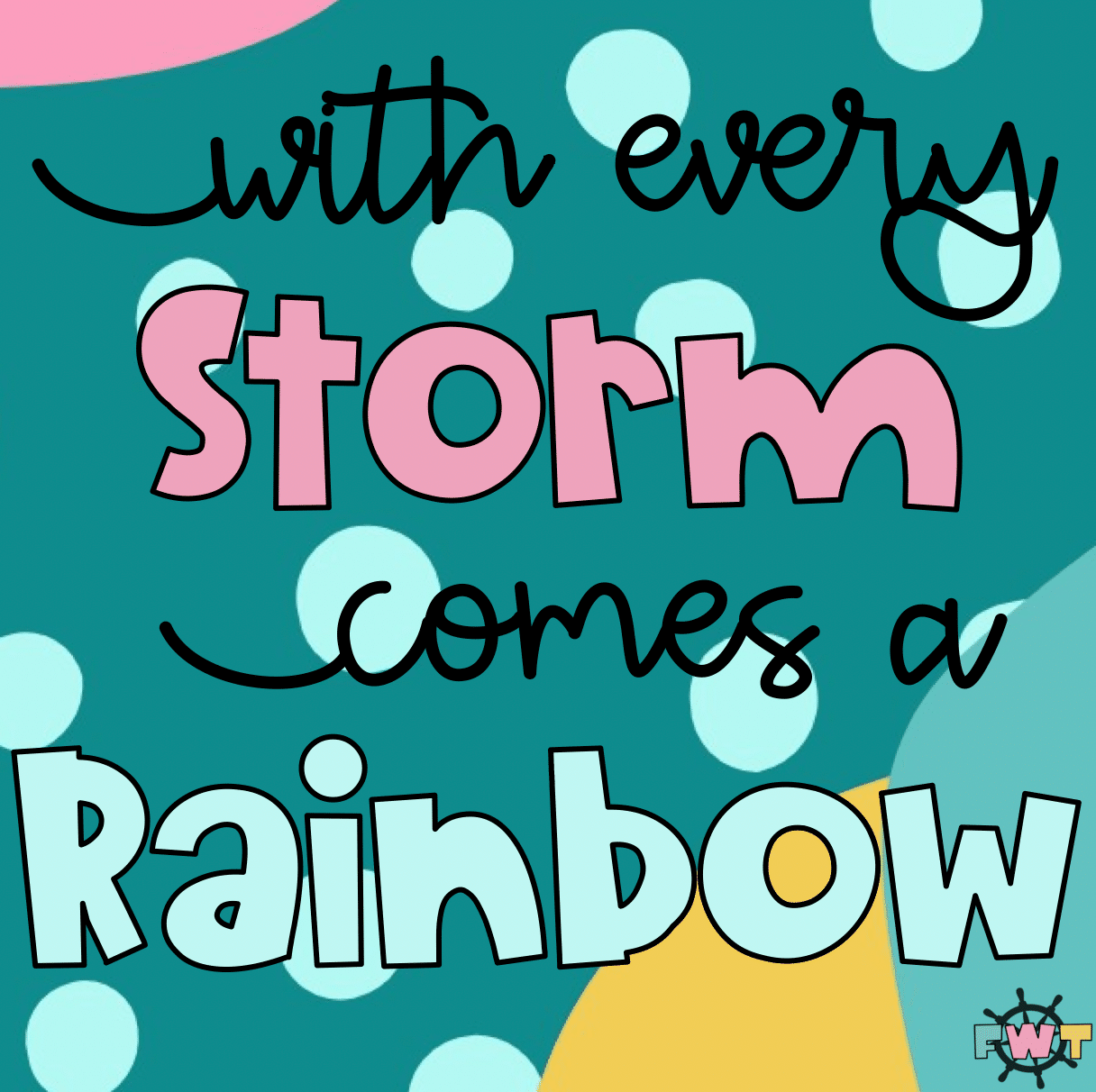 I don’t need to tell anyone in the school system how difficult the last year and a half was for education. Not just for teachers, but for bus drivers, principals, parents, students, and everyone in between.
I don’t need to tell anyone in the school system how difficult the last year and a half was for education. Not just for teachers, but for bus drivers, principals, parents, students, and everyone in between.
Teaching during a pandemic was by far the most difficult thing I have encountered in my career. It is hard to believe that anything good could come out of a year of lockdowns and virtual learning, let alone find the silver lining… But I am here to tell you… with every storm comes a rainbow.
It’s time to find that rainbow and help ourselves and our students with this upcoming school year. We must move forward and celebrate the skills we acquired throughout the storm.
Take a second to reflect… not on the bad but on something you learned this school year. Was it how to mute and unmute? My students taught me a fancy trick using the space bar!
Did you learn to use an online assessment tool like Kahoot! Or Quizizz? Did you connect with parents at a moment’s notice online using Zoom or Google Meet? Who knew we would be video conferencing with our students and families!
Were you finally able to start using a digital planner instead of your paper one? This has been my favorite new transition, I will never go back.
All of these things and SO MUCH more are the wins of having to teach virtual or hybrid this past year. You were encouraged to be an early adopter of tech tools and new devices like no other time before. But you dove right in to learn new skills and now you have experience with things like recording a screencast to give students directions or creating a complete interactive classroom with Google Slides and your Bitmoji.
If you’re on Facebook and you haven’t joined this teacher group yet… it is the rabbit hole of all rabbit holes. You will have access to FREE teacher resources that will help build engagement in your classroom using your Bitmoji. Join here now!

It’s time to celebrate YOU for all you have learned. I am proud of you for getting out of your comfort zone and I promise you, you are a better educator for it.
So now what… you know all of these new and exciting skills, what do you do with them? Are you excited to get back into the classroom and go back to normal? This is an overwhelming, “NO!” This is your time to shine and take this great opportunity to start reimaging what schools can look like. Be that trailblazer that reflects on the things that got easier because of your new skills. Challenge yourself and your colleagues to think outside the box. Make this year the best year yet!
As you start to set up your new classroom think of ways you can incorporate those virtual learning skills into the new school year. You might not be virtual or hybrid anymore but you can still create digital libraries, have students record Flipgrid videos, go on virtual field trips around the world and so much more.
I know the one thing I will never go back on is parent/teacher conferences. I was able to meet with each and EVERY one of my parents (multiple times) over Google Meet during this past school year. I have never felt more connected with them and we both had the flexibility to do it from wherever was best.
What is one thing you would continue to implement this school year?
Before the pandemic, I had a difficult time teaching the students simple tech skills and they were in front of me in the classroom. They had trouble logging into their computer, remembering their passwords, and finding certain button icons on the screen to help troubleshoot any situation. During virtual learning, this became even harder. The students were not in front of me anymore to help them over their shoulder. I had to get creative with creating multiple tech tool button cards. The cards are a good visual of what each button is and what they are used for. I was able to hold them up to the screen so the students could see where to go. I will continue to use these when we get back into the classroom to make learning tech tools easier. I have created buttons for basic Internet browsers, Canvas, Google Meet, Zoom, Pear Deck, and Schoology. They truly are a game-changer, I couldn’t imagine going back to before I had them.
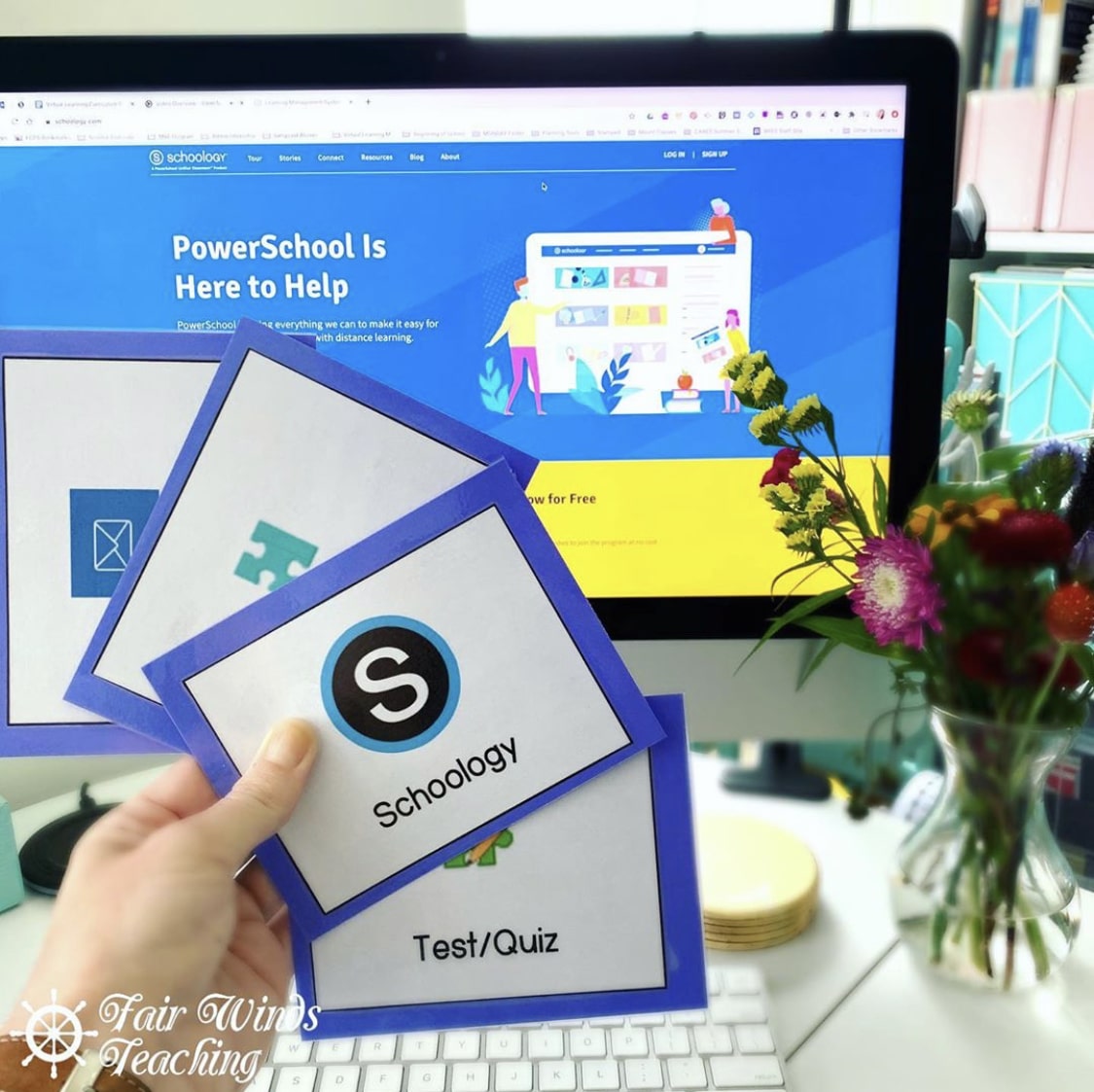
The second resource that I can’t live without is my tech tool username and password display cards. Simply print these out and add your class code or password. I add them to a ring and hang them at the front of the classroom for all students to be able to access. It is a great way to never forget your codes and to build agency with your students.
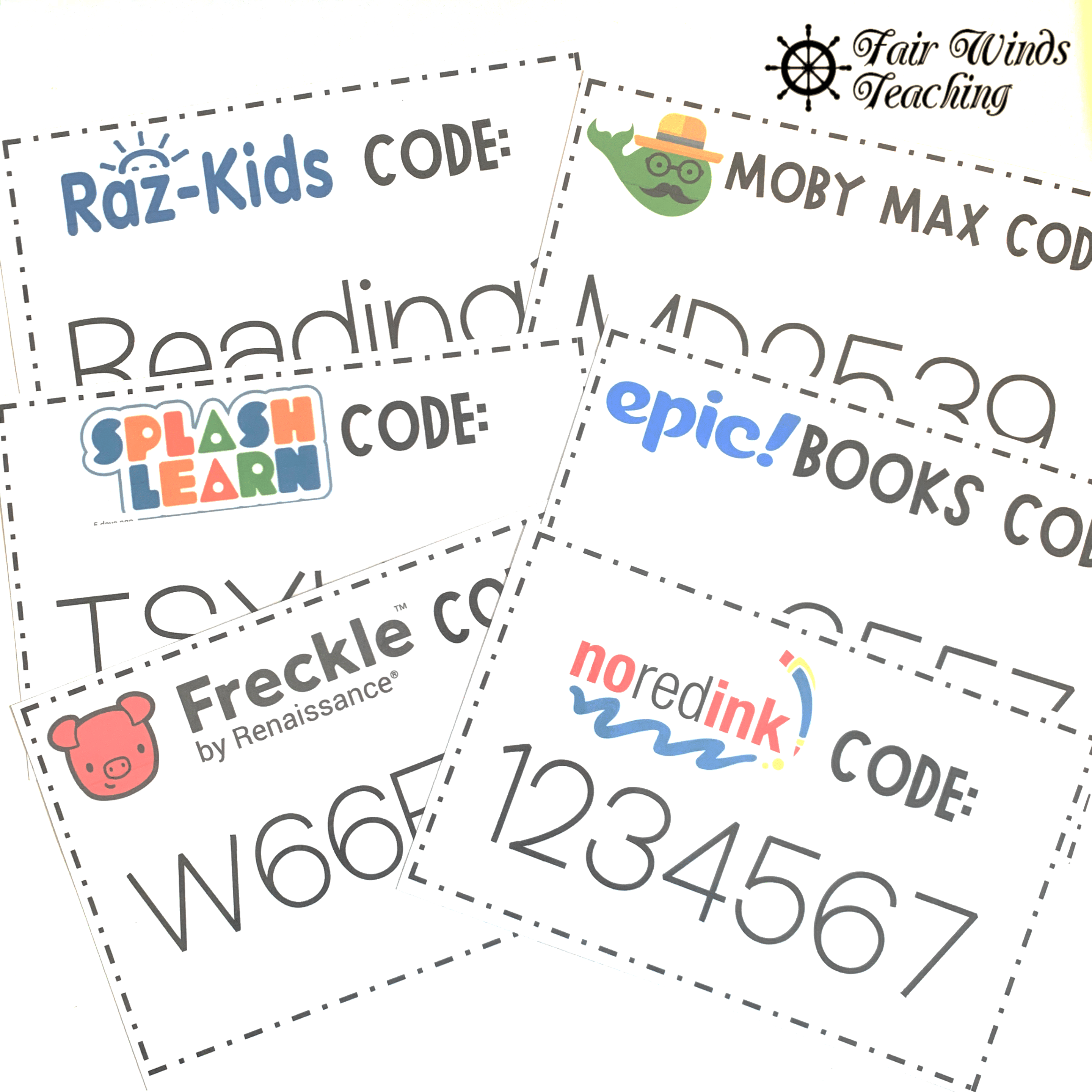
All these things and more are like letting the genie out of the bottle, I don’t think he’ll ever go back in. All we can do is learn from the skills we acquired and make the education system even better than before.
As we look forward to this upcoming school year, please try to remember the good that came from this very difficult year. There are so many bright colors in the rainbow and you just have to find them!

Casey Keyser is a third-grade teacher at Butterfly Ridge Elementary in Frederick County, Maryland. She was recently recognized as the national winner of the NEA Foundation’s 2021 Teaching in Excellence Award. Casey is the proud owner of the Education Resource Blog, Fair Winds Teaching, and loves to connect with her education community through her TeacherPayTeacher’s business.
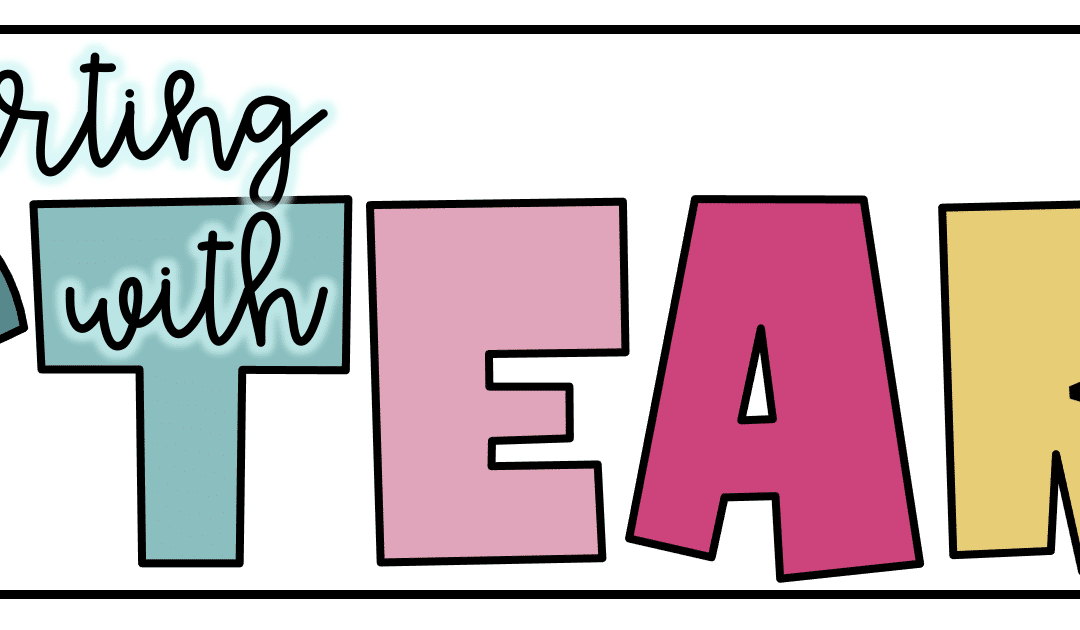
Starting with S.T.E.A.M.
Written by Casey Keyser, MSEA Third Grade Teacher You flip on your classroom lights, carry your 5 bags and 4 drinks in, drop everything down at your desk, turn on your computer, write your objectives, make copies and then it’s time to welcome in your students, and...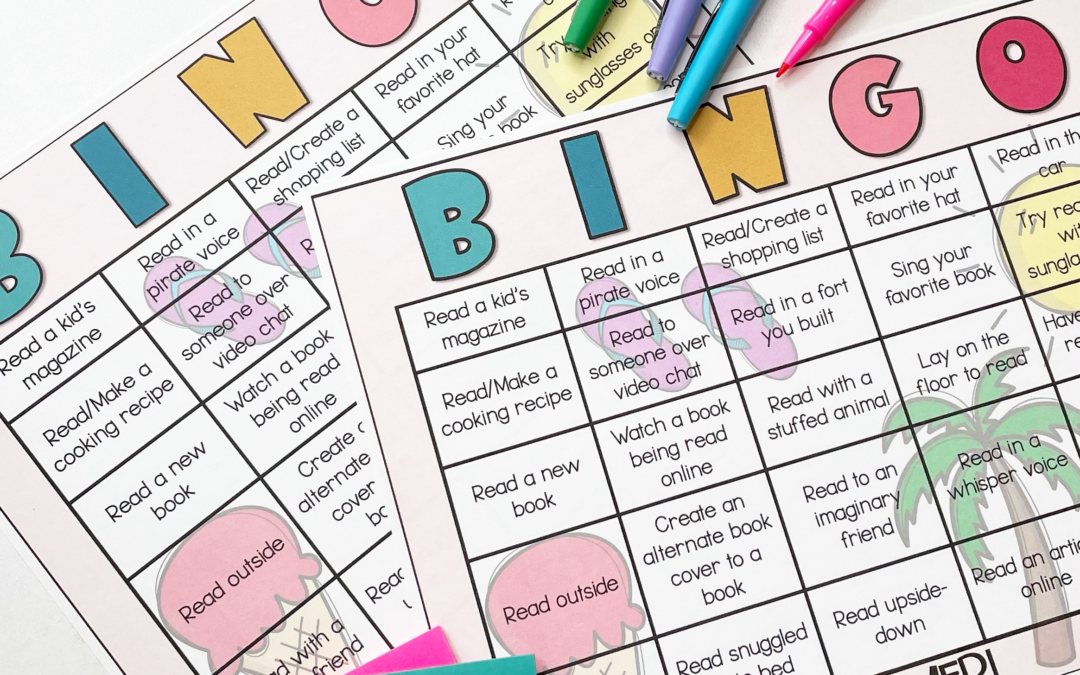
Let’s Play Summer Reading BINGO!
Written by Casey Keyser, MSEA Third Grade Teacher
Did you know that “Children who read at least 20 minutes a day are exposed to almost 2 million words per year”?
Let me say it louder so you can hear me… 2 million words! This is huge for the young developing mind, but having two or more months off from school makes this very difficult to maintain during summer break.
What can you do as an educator or parent to help close this reading gap?! The answer is simple… give them a ton of opportunities to pick up and book and make it FUN!
Make Reading Fun!
Whether you grab a flashlight, a stuffed animal (my students call them “stuffies”), or build a fort, you can engage in fun ways to get your child reading each and every day!
Reading should be something a child is interested in doing, not forced. You want to give them the opportunity to build a love for reading. During the school year, students are often made to read on a specific topic. Summer is a great opportunity to read topics that they are interested in, so they can discover a love for reading. To do that, you’ll need to find out what topics those are. Have them “taste” or try a wide range of different genres of books.
To help you out, I’ve created this Summer Reading BINGO that you can introduce to your students/children this summer! The challenge is for them to either complete as many boxes as possible or complete a BINGO (Vertical, Horizontal, Diagonal, postage stamp, or four corners).
(click to download!)
I encourage my students to complete their Summer BINGO over their summer break and then give them an opportunity to turn it in the first week of school to SPIN THE WHEEL!
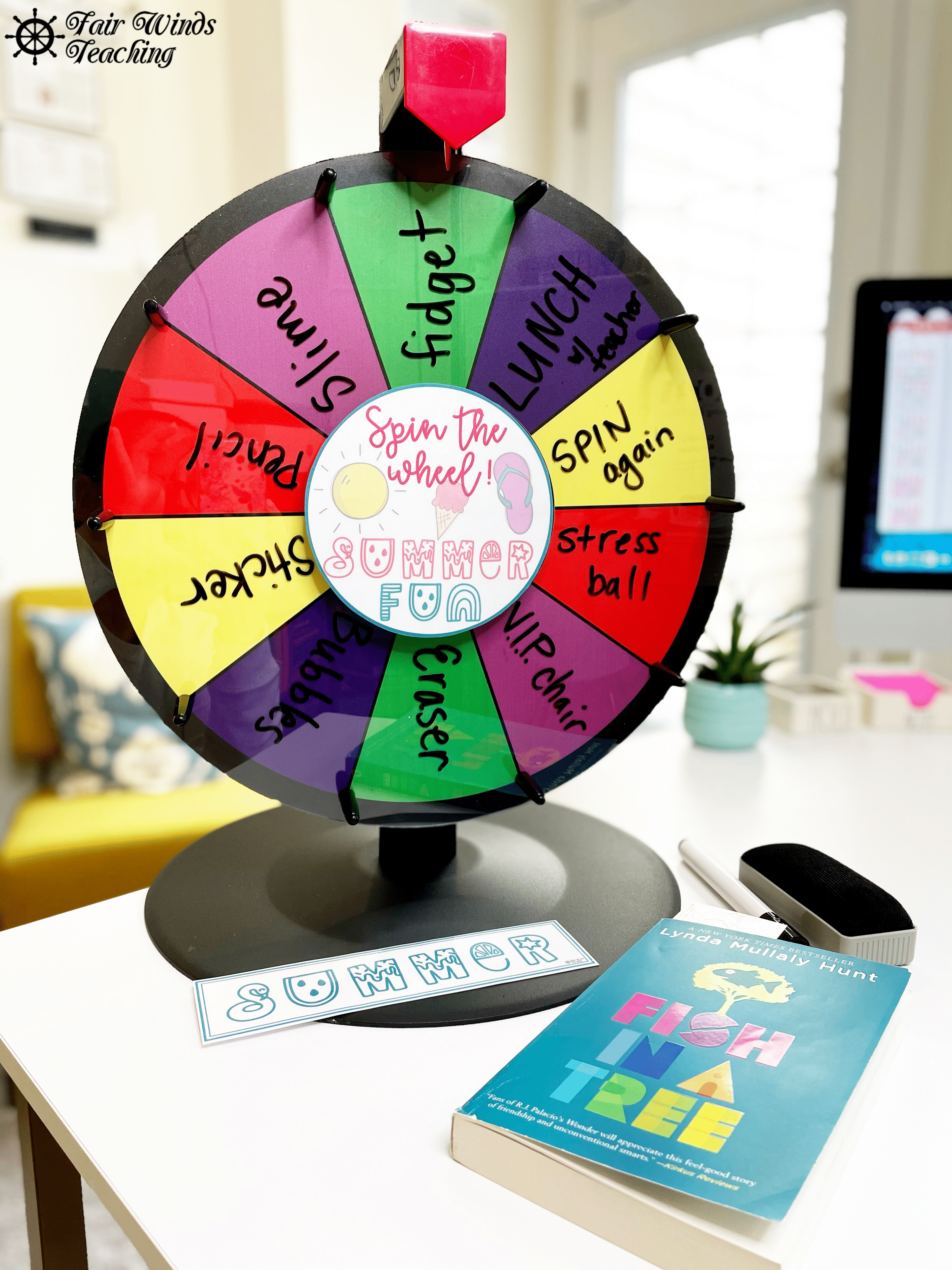
What’s the wheel!? Well, I live to make everything a game so I use my Prize Wheel to show what prizes they could win if they complete the BINGO sheet over the summer!
I use small prizes such as glitter slime, fidgets, lunch with the teacher, pencils, stickers, bubbles, stress balls, V.I.P. chair, chalk, and erasers. The pure joy of watching a student spin the wheel is worth it alone! If you would like to check these favorite classroom items out, check out my page of favorites here.
Engagement is KEY!
This prize wheel is from Amazon and I use it for so many different reasons. The middle section is a simple circle so I design different labels for each wheel spinning occasion. I created a Summer Fun prize wheel FREEBIE here, simply print and tape onto your wheel.
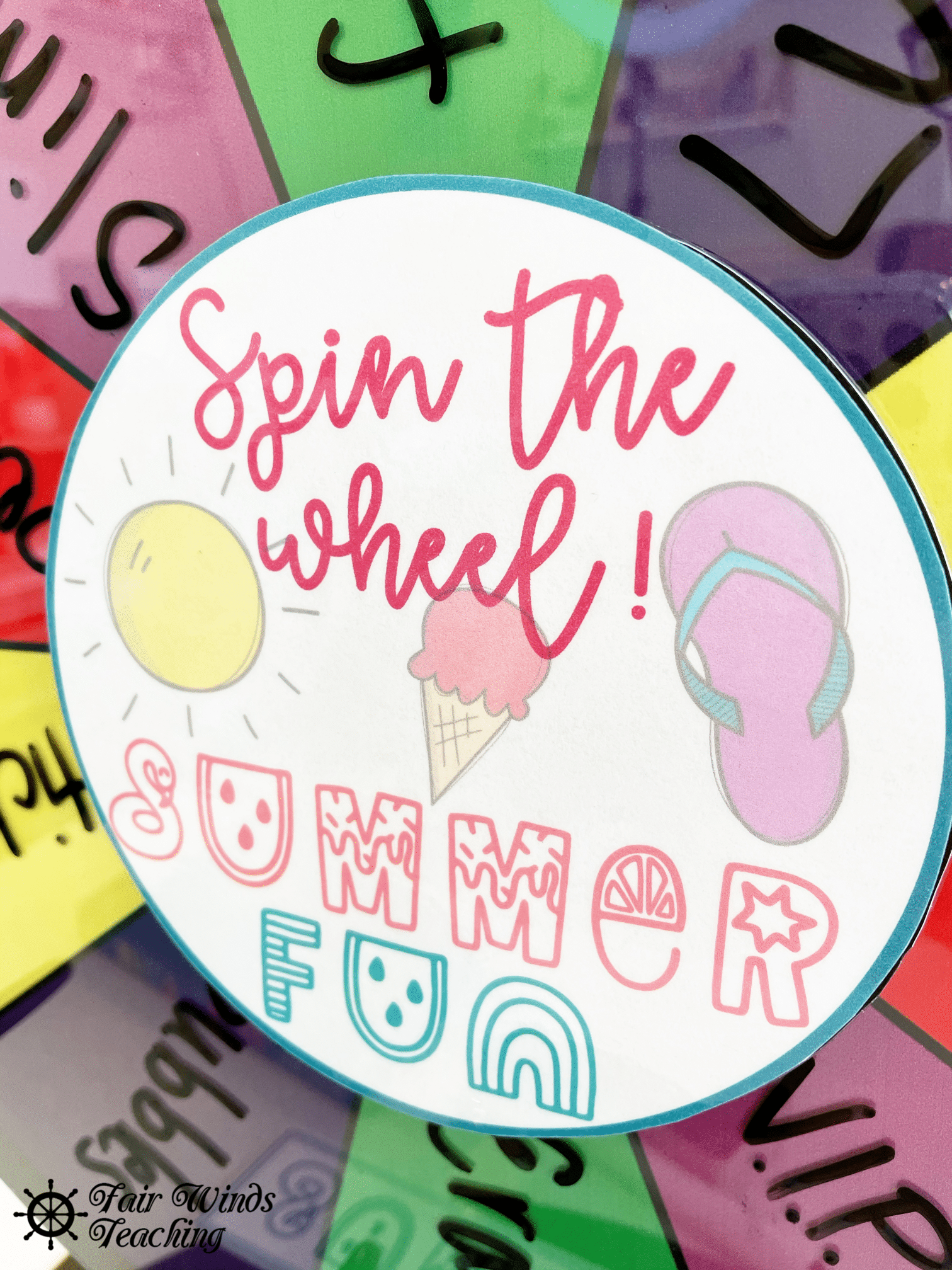
Don’t have a prize wheel yet? Check out my favorite two here.
Parents, you could also easily do this at home as well. If you don’t want to purchase a wheel, just put a list of prizes in a random generator like this one!
There are also other ways to excite your students with a summer full of reading…
-
- Free books
- Extra recess
- Eat outside with a blanket
- Ice cream or specials treat
- Just the pure enjoyment of the BINGO! (you don’t always have to have a prize)
I kick the Summer Reading BINGO off by giving each student a printed copy of the BINGO board, a Summer bookmark (BONUS FREEBIE), and a summer-themed chapter book they can keep!

For books, I use Scholastic Book Clubs to buy the $1.00 books each year. This is a cheaper way to give your students a book on their reading level. If you have not signed up for Scholastic Books Club yet, use this code (00091 – Casey Keyser – 2473029383) to earn an Extra 250 Bonus Points to redeem for FREE books!
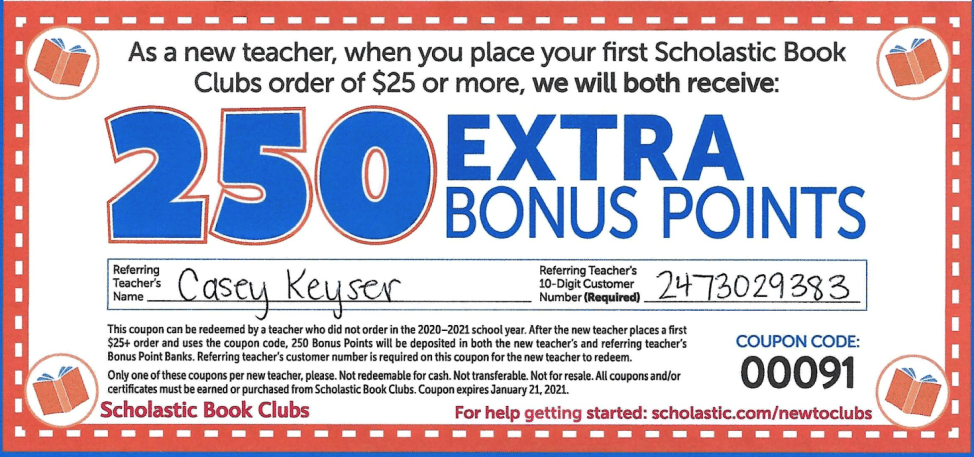
I have also gone through my own classroom library books and weeded out ones that I can give away. This allows my students to pick their own book to take home.
Preparing our Students for Summer at Home
My class then discusses ways to be able to access FREE books from the local library and school and how to read books online for FREE.
Here are some of my favorite online book websites!
-
- Epic Books! – Unlimited access to hundreds of high-quality kids read-along books.
- Capstone Reading – The perfect Capstone Interactive eBook is waiting for you! Choose from different subjects, genres, and levels to find just the right book.
- Vooks – Vooks is a streaming service for kids, where storybooks come to life!
- Noggin – Noggin’s ever-expanding library of downloadable eBooks feature your kids’ favorite Nickelodeon stars.
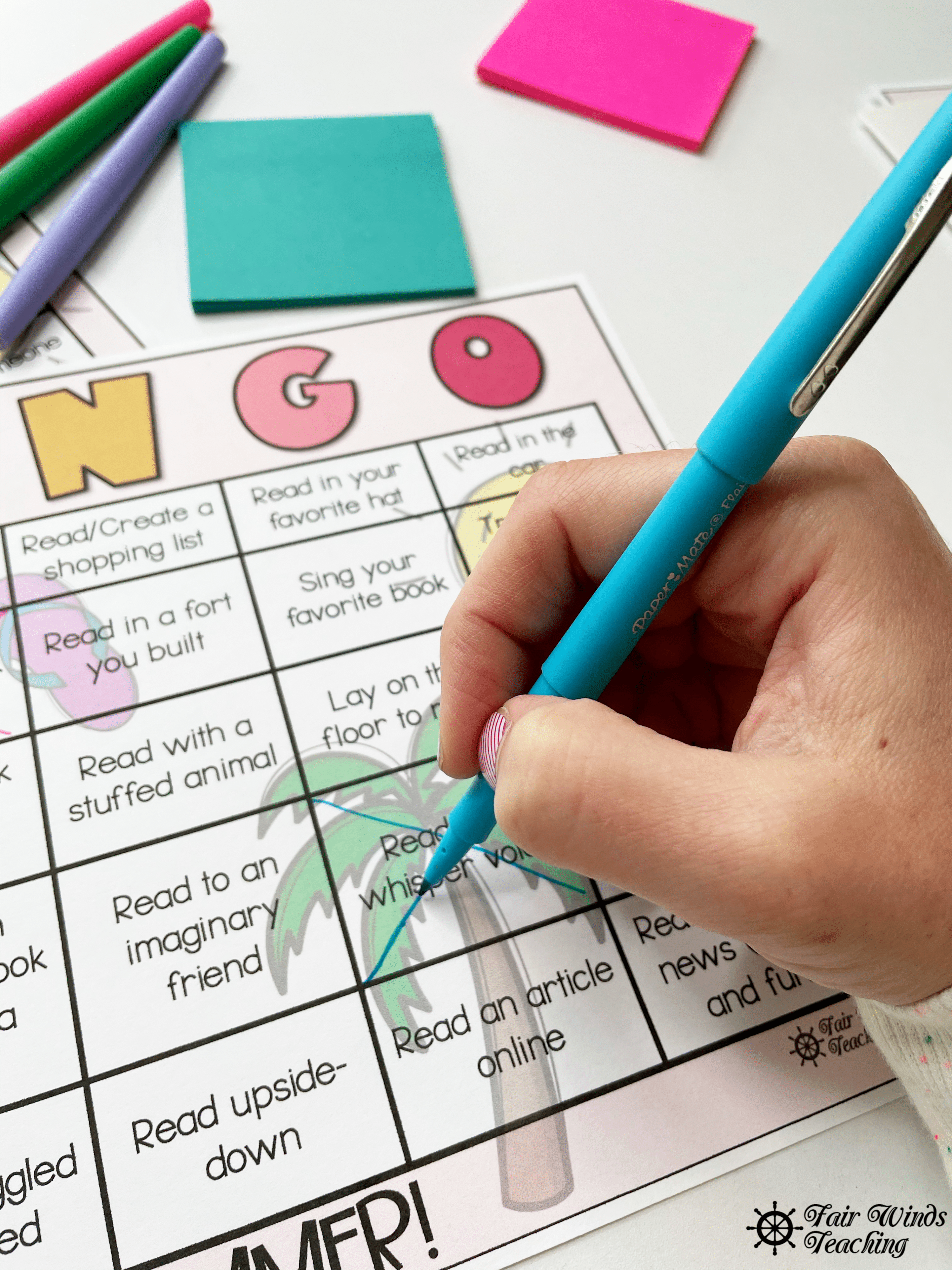
Time to get started; we cross off the first box together! This way all of my students get to start with one box already crossed off — it’s like a FREE space! You can pick any that work for your classroom but I do “Read on the Dark with a Flashlight.”
I have a class set of mini flashlights from Amazon and I have the students crawl under their desks and read in the dark with their flashlights for 20 minutes. It’s such a fun and peaceful way to get them excited about reading!
Summer Favorites

I love so many different books, but here are four of my favorite summer reads. I love to select and focus on books that are thought-provoking and entertaining. “Be You!” By: Peter H. Reynolds is a book about being all the things you were born to be. “Do Unto Otters”: A Book About Manners By: Laurie Keller is a book to remind students about manners and how to be a good friend and a good neighbor. “The Legend of Rock, Paper, Scissors” By: Drew Daywalt is a witty fun adventure about the classic game Rock, Paper, Scissors. I always challenge my students in a battle of this game and it’s a great time to review the rules of playing fair. Lastly, I love the book, “Unicorn Thinks He’s Pretty Great” By: Bob Shea. This book is about a goat who thinks he wants to be a unicorn. Join him on his adventure to discover himself and why he is great himself.
Helping your students or children find a love of reading is so very important, for more blog posts on Summer fun, head over to Fair Winds Teaching.
Thanks for reading!
– Casey Keyser
Other Favorite Summer Products
Summer Minute to Win It challenge – Grab a one-minute timer and have some fun. Includes the directions and materials needed to play 13 different Summer/ End of School themed Minute to Win it games! Living those summer vibes! Use this digitally, at summer school, during the summer with your own kids, or at school at the beginning of the year! Check out my YouTube channel here for 3 free games now!
Your Future’s so Bright Sunglasses – Grab a pair of sunglasses and print these labels for a great end-of-the-year gift!
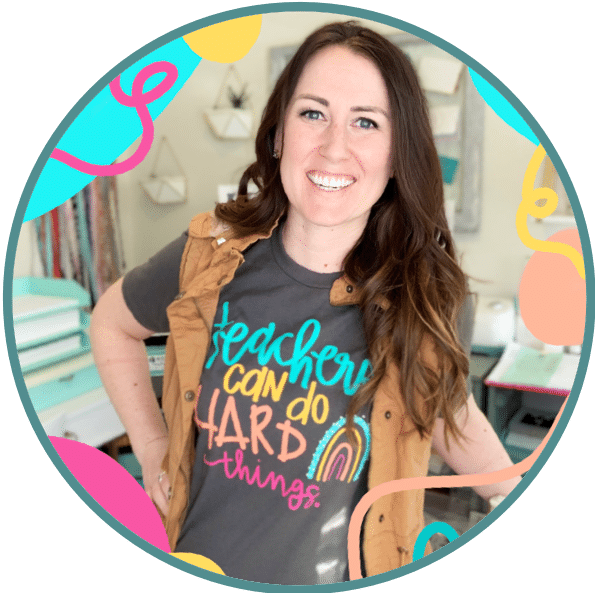
Casey Keyser is a third-grade teacher at Butterfly Ridge Elementary in Frederick County, Maryland. She was recently recognized as the national winner of the NEA Foundation’s 2021 Teaching in Excellence Award. Casey is the proud owner of the Education Resource Blog, Fair Winds Teaching, and loves to connect with her education community through her TeacherPayTeacher’s business.

